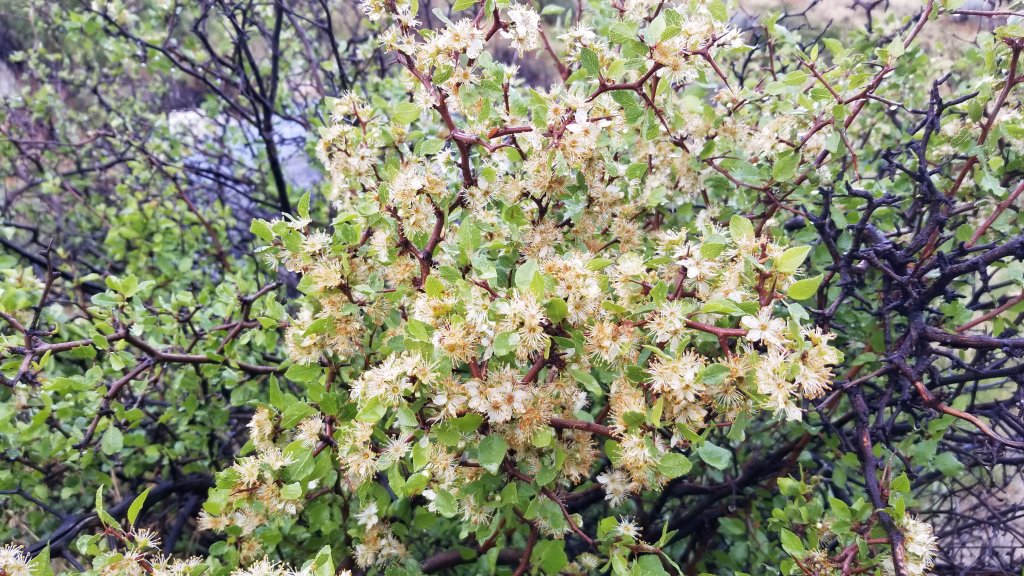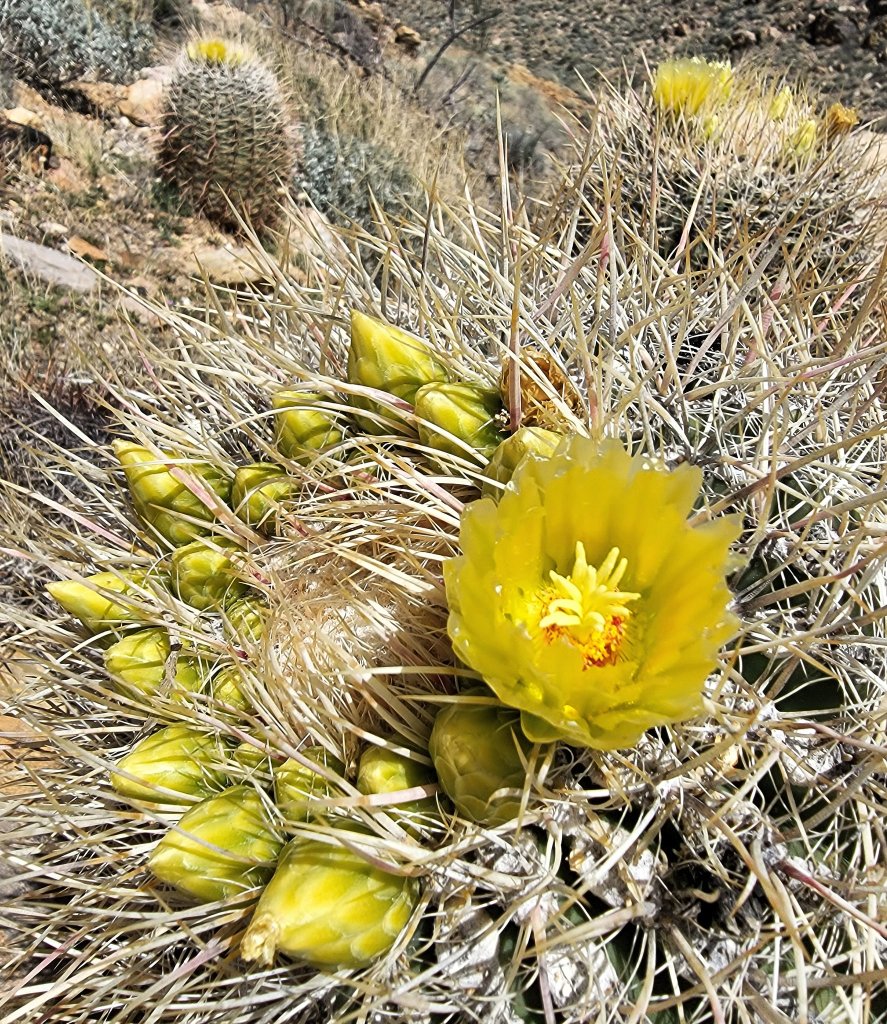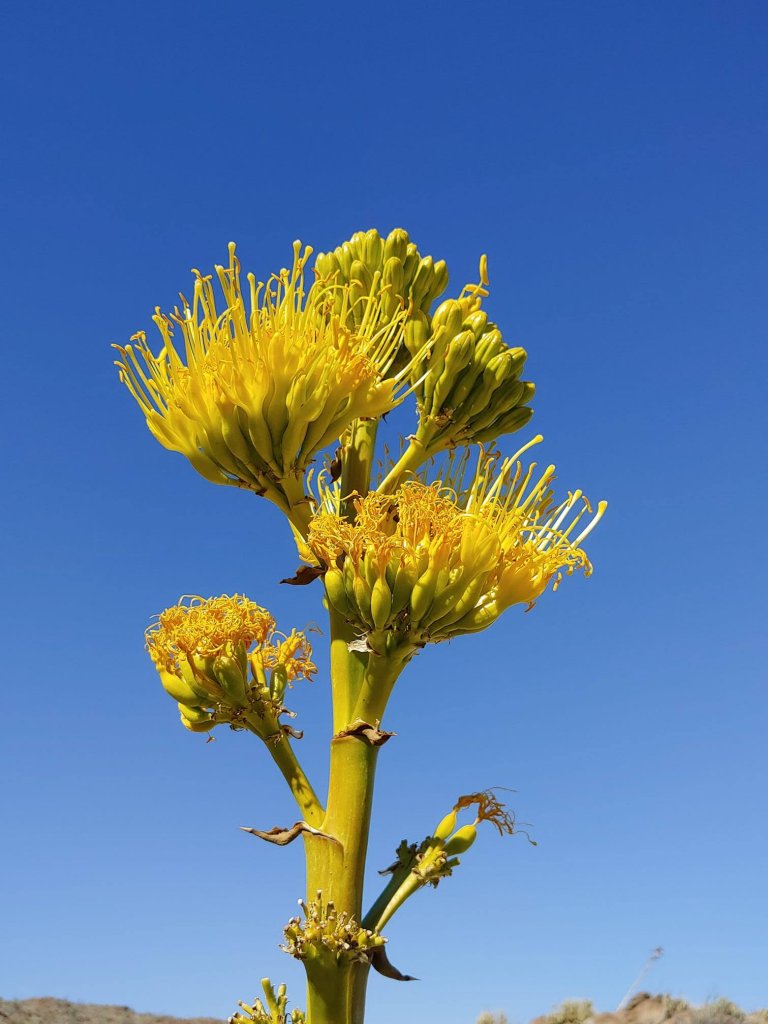Each year around this time, Anza-Borrego Desert State Park in Southern California becomes the rugged stage for the so-called “desert bloom.” But this year – along with everything else in our pandemic world – the bloom is taking on a different form, and the shrubs, they are shining.
“It’s kind of an odd season. I guess like everything else, it’s really different this year,” Betsy Knaak, executive director of the Anza-Borrego Desert Natural History Association (ABDNHA) told NBC 7 this week. “I think there’s still a nice season to come. April is going to be quite pretty here.”
Anza-Borrego Desert State Park – the largest state park in California – is located about 90 miles east of downtown San Diego. One-fifth of the park lies in San Diego County, while the rest lies in Imperial and Riverside counties, spanning Borrego Springs and Shelter Valley.
Now, typically, after a winter season of consistent, soaking rain, the region blooms between late February and mid-March with a mix of colorful, annual wildflowers like sand verbena, brown-eyed primrose, spectacle pod, and sunflowers, to name a few. The vibrant flowers inch their way up the slopes of the mountains and the contrast of the blooms against the backdrop of the earth is breathtaking.
Get top local stories in Southern California delivered to you every morning. Sign up for NBC LA's News Headlines newsletter.
 ABDNHA
ABDNHAThis year, on the heels of a dry winter season, Knaak said the annuals aren’t blooming like usual in places that are easier to spot, like along the roads leading into the Anza-Borrego region.
She said the best bet for finding some of those “surprise annuals” this year are the canyons, where more water accumulates.
California
News from across California
“Visitors will find some color, but they will just have to seek the wildflowers out a bit more,” she explained.
Visitors will find some color, but they will just have to seek the wildflowers out a bit more.
Betsy Knaak, Executive Director of the Anza-Borrego Desert Natural History Association
But the “pillars” of the desert – the shrubs and perennials that make the desert special year-round – are blooming. Knaak said they are having their moment this season.
“We’ve all been pillars, haven’t we? Survivors. And we’re all going to shine in our own way,” she added.
What's Blooming at Anza-Borrego?
Usually, Knaak said the peak of the desert bloom is around mid-March, give or take a week. This year though, it’s just not quite happening yet.
Knaak said the late-winter storms in March have fueled the blooming of perennials and year-round shrubs in the region. She said ABDNHA has been tracking blooms of desert apricot, brittlebrush, chuparosa, and creosote bush. The ocotillos are greening (eventually, their red, flame-like tips will come). The desert agaves are putting up their stalks. The cacti are budding.
 James Dale
James Dale“They are responding to the late winter rain,” Knaak said. “This might be the year of the desert apricot.”
Knaak believes this year’s slow-going bloom may extend into April. Perhaps, she said, Mother Nature is waiting for people after a long, difficult year.
“Maybe the Earth is waiting for us. It’s getting ready for us to start this next phase of our lives,” Knaak said.
 Penny Lundquist
Penny LundquistThe ABDNHA usually offers maps to visitors highlighting key spots to see desert wildflowers but those locations are much harder to pinpoint this time around, Knaak said. She said it’s hard to predict what’s ahead for the season, but the dryness will certainly continue to impact the annuals.
Tracking the Perennials: Where to See Some Desert Blooms
Typically, areas like Henderson Canyon, Coyote Canyon Road, DiGiorgio Road, and the Borrego Badlands are go-to spots for desert bloom-seekers but Knaak said those spots aren’t blooming right now.
Instead, she said canyons on the west side of the park are blooming – areas where visitors would need to park and walk into the canyon.
So far, the ABDNHA has tracked reports of blooms in these areas:
- Hornblende Canyon, south of state Route 78
- Mine Canyon on SR-78 (Knaak said shrubs are blooming here and this spot is good for family trips)
- Borrego Palm Canyon (Knaak said there have also been sightings of bighorn sheep here)
- Culp Valley (this is at a higher elevation and many different plants are coming into bloom here)
- Grapevine Canyon and Plum Canyon, toward SR-78 (reports of desert agave blooming)
- San Felipe Road and Doz Cabezas Road in the southern side of the park (Knaak said there are reports of a few patches of lupine blooming here)
Come April, Knaak said she thinks the the drive down the Montezuma Grade and into Borrego Springs will be nice, with some blooms – but again, it’s difficult to predict.
“April could be a big, beautiful surprise,” Knaak said. “We have to wait and see in this most unusual year.”
April could be a big, beautiful surprise.
Betsy Knaak, ABDNHA
A Dry Winter
Knaak, who has lived in the Anza-Borrego Desert since 1978, said the formula for a successful desert bloom, in large part, includes regular rain in November, followed by winter storms in December and January that give that soaking, consistent rain, and maybe a little extra rainfall in February. Simultaneously, the temperatures in the desert must remain on the mild side and the winds can’t whip too much.
Under these conditions, seeds germinate, sprouting stalks and leaves. Then, the flowers arrive. Once their short but sweet life cycle is over, wildflowers shed their seeds onto the desert soil and those seeds patiently wait their turn until the next desert bloom, Knaak explained.
But this past winter was drier than normal.
NBC 7 meteorologist Sheena Parveen said that as of March 22, the year-to-date precipitation for the Borrego Springs area stood at 1.27 inches. Normally, year-to-date precipitation for the area is 3.09 inches of rainfall, so Parveen said we’re looking at rain deficit of 1.82 inches right now.
NBC 7 also reached out to the National Weather Service in San Diego about rain totals measured, thus far this season, in Borrego Springs. The agency tracks rainfall in “water years,” which span 12 months from October to September.
The NWS said that, so far, Borrego Springs has gotten 1.69 inches of rain since Oct. 1, 2020.
Parveen said that after this week’s springtime showers, that number could see a small uptick. For comparison, at this time in 2019, Anza-Borrego Desert State Park had gotten 4.44 inches of rain for the 2018-2019 water year, so the desert bloom of 2019 was very colorful. The 2017-2018 water year brought 1.08 inches of rain to the region. The water year 2016-2017 – which brought the banner bloom of February to March 2017 – tracked 6.27 inches of rain in the region.
Swainson's Hawk Migration: Look Up
Along with the desert bloom happening on the ground, something special is happening in the air at Anza-Borrego this time of year: the Swainson’s Hawk migration, as the birds – coming from South America – fly through the region from mid-February through early April.
Typically, when the annuals are in bloom, the flowers attract an insect called the White-Lined Sphinx moth. Once those moths transform into caterpillars, the insects feed on the wildflowers. As the Swainson’s Hawks soar over the desert, they stop to eat the caterpillars, replenishing their energies to complete their migration journey.
Knaak said that even without a whole lot of wildflowers in bloom this year, the Swainson’s Hawk migration is still happening – strangely, at a higher volume.
Knaak said the ABDNHA has counted around 5,200 Swainson’s Hawks migrating through the region so far, not relying on their normal food source of those caterpillars.
“They’re bringing us a lot of joy,” Knaak said. “And they’re doing this without their usual good meal.”
So, even the Swainson’s Hawks, Knaak said, are finding a way to power through these tough times.
The Impact of the Coronavirus Pandemic on the Desert
When the coronavirus pandemic reached the region in mid-March of 2020 and that first lockdown order went into effect, it deeply impacted tourism in the Anza-Borrego region. It was right around that date that visitors normally flock to the area for the desert bloom.
Knaak said the History Association was forced to cancel two of its biggest events of the desert bloom season – its Garden Tour and Birding Festival. Hundreds of tickets had been sold.
Coronavirus restrictions forced small retailers to close and Knaak said ABDHNA was closed for two months, until May 2020. For the past 10 months, the center has been operating on a smaller scale, following pandemic-era safety rules, including limited capacity and the use of face masks.
Like all businesses, Knaak said ABDHNA had to learn to adapt.
They upgraded their online shop, set up webinars so desert enthusiasts from all over the world could learn about the region virtually, and increased their email updates to ABDHNA members. They relied more on the in-person gift shop inside the center.
“It was like changing your entire business model on a dime,” Knaak told NBC 7.
The challenges persist. Knaak said the center has relied heavily on member donations and support during the pandemic. Her co-workers have had to pull together like never before.
The desert and the open space and the quiet and the beautiful views -- and what it means to people.
Betsy Knaak, Executive Director of ABDNHA, reflecting on what she appreciates about the desert region
After all of this, Knaak said she also has a new appreciation for place she has called home for more than 40 years.
“You know, the desert and the open space and the quiet and the beautiful views – and what it means to people,” she said. “And the wonderful benefits of nature.”
Final Desert Details
Knaak said the Anza-Borrego Desert Natural History Association (652 Palm Canyon Dr. in Borrego Springs) is open seven days a week, from 9 a.m. to 5 p.m. Monday through Saturday and 10 a.m. to 4 p.m. on Sundays. Visitors can drop in and get some sightseeing tips and visit the Birds & Blooms Garden Shop inside. Don’t forget your face mask.
The center of Borrego Springs – including small shops and restaurants are open, with COVID-19 modifications, including limited capacity.
The California Department of Parks and Recreation has been keeping track of pandemic-related changes at Anza-Borrego Desert State Park on its website, here.
Day use outdoor areas of the park are currently open to the public, but Californians are asked to recreate responsibly and follow all health and safety guidelines.
As of March 23, most special events and tours at the park are cancelled and group camps and group picnic areas are closed, but here’s what’s open at Anza-Borrego Desert State Park:
- Anza Borrego Visitor Center (Thursdays-Mondays, 9a.m. - 5p.m., with limited capacity)
- Camping (developed and primitive)
- Dispersed Backcountry Camping
- Peg Leg and Culp Valley Primitive Camping Areas
- Borrego Palm Canyon Full Hookup Campsites
- Tamarisk Grove Campground
- Arroyo Salado, Blair Valley, Yaqui Pass, Yaqui Well, Bow Willow, Mt. Palm Springs, and Fish Creek primitive camps
- Backcountry Unpaved Roads
- Hell Hole Day-use Area: for day-use activities only from sunrise to sunset
- Sunrise Trail Head Parking/Day-use Areas
- Coyote Canyon Above 3rd Crossing
- North Coyote Canyon / Turkey Track Access Gate
- Borrego Palm Canyon Day-use (Borrego Palm Canyon Trail Map)
What’s open and closed at the state park could chance as COVID-19 restrictions shift, so check this website before your visit.
What Do I Pack? Plan Ahead
In addition to the ABDNHA website, visitors can also head to the Anza-Borrego Foundation’s website for a wealth of information about the desert bloom. There’s even a Wildflower Hotline – (760) 767-4684 – consistently maintained through the season, offering pointers on what’s blooming where.
In your desert day trip bag, you want to pack sunscreen, sunglasses, a hat and light, breathable clothing that you can layer as the temperatures rise or drop. Bring plenty of water to avoid becoming dehydrated, pack snacks, and wear comfortable, sturdy walking or hiking shoes.
To learn more about the Desert Bloom, visit these websites:
• Anza-Borrego State Park
• Anza-Borrego Foundation
• Anza-Borrego Desert Natural History Association



